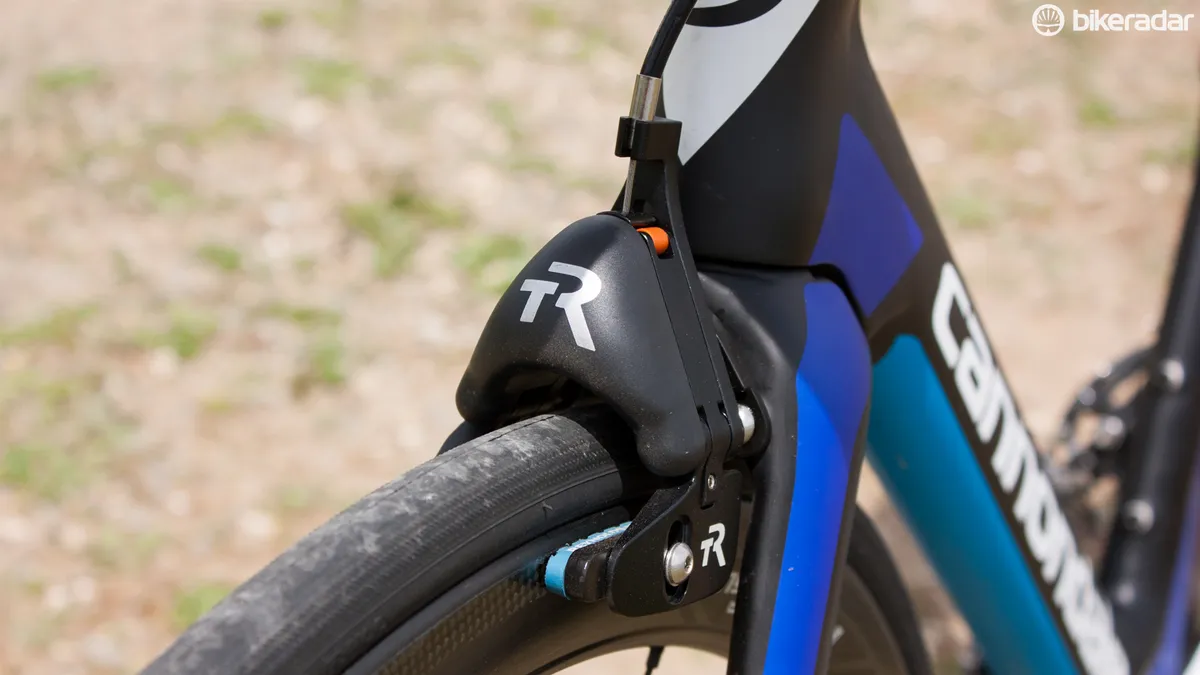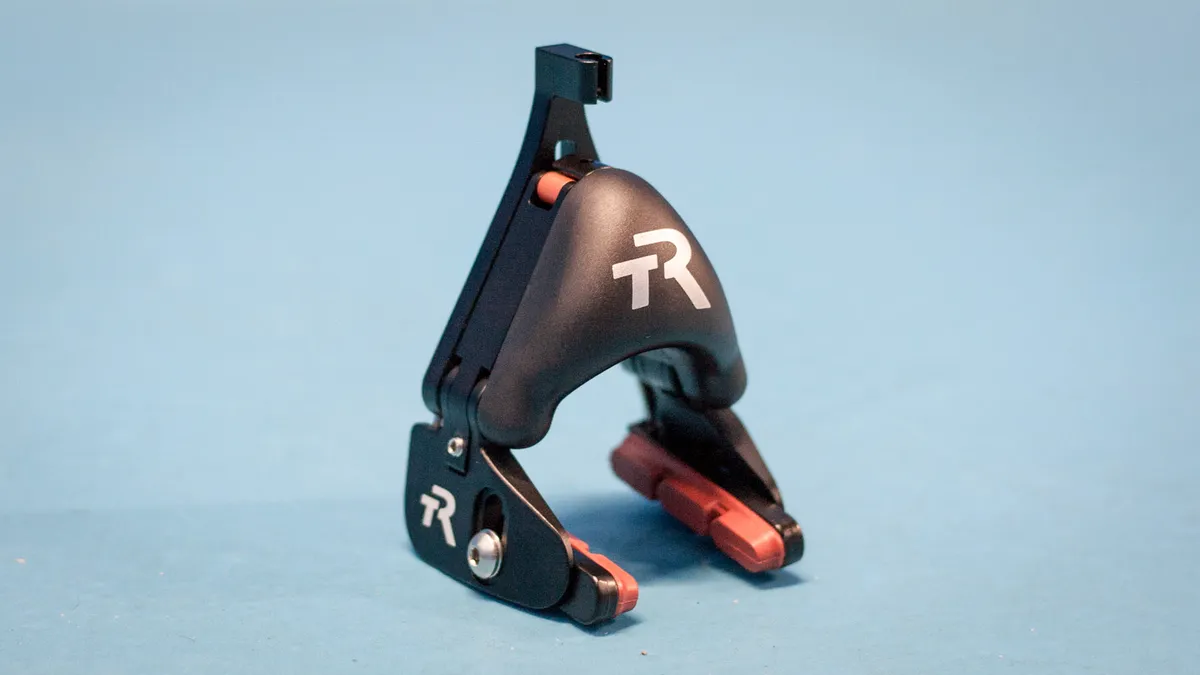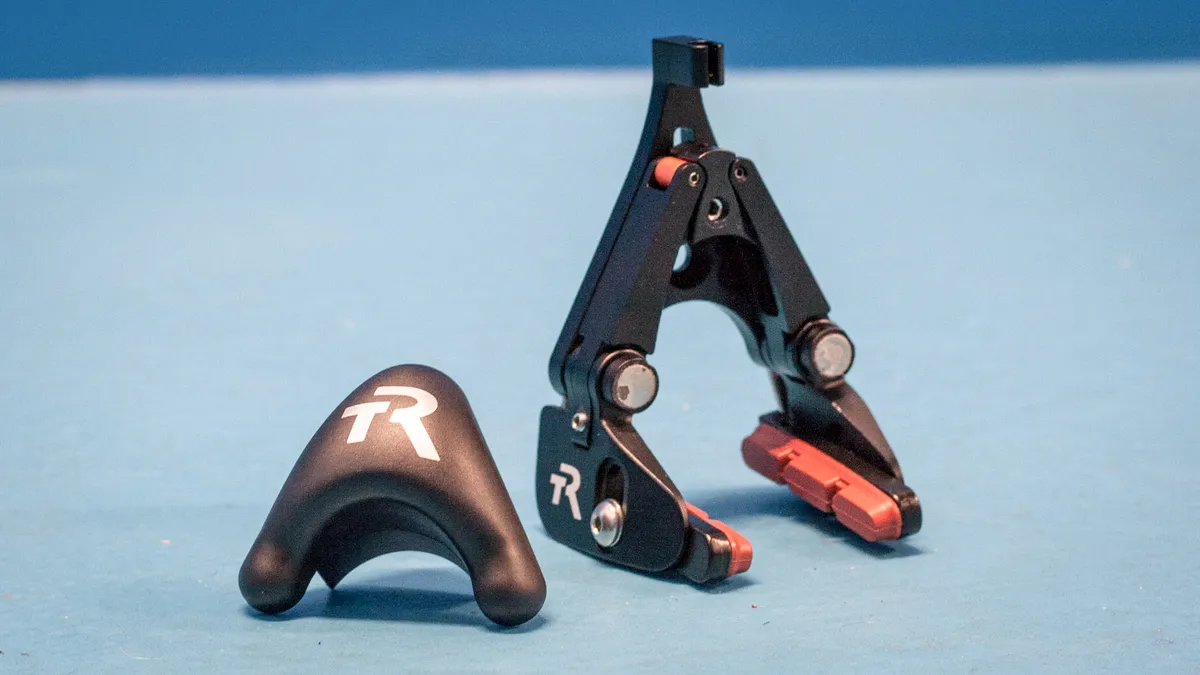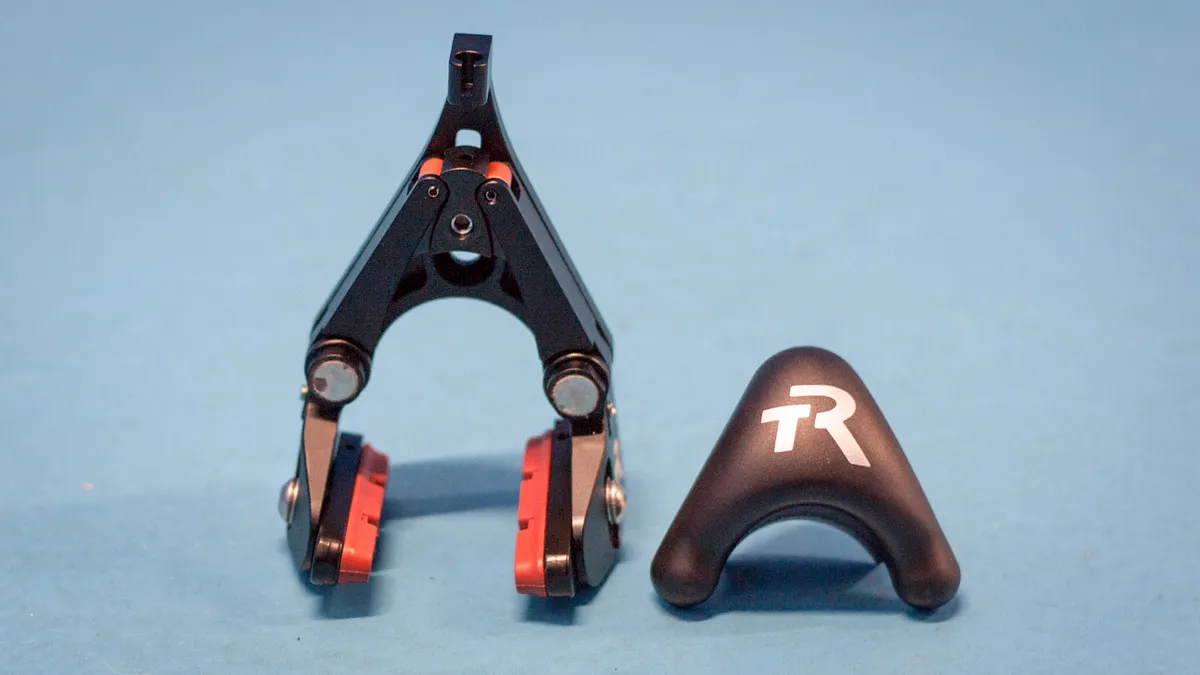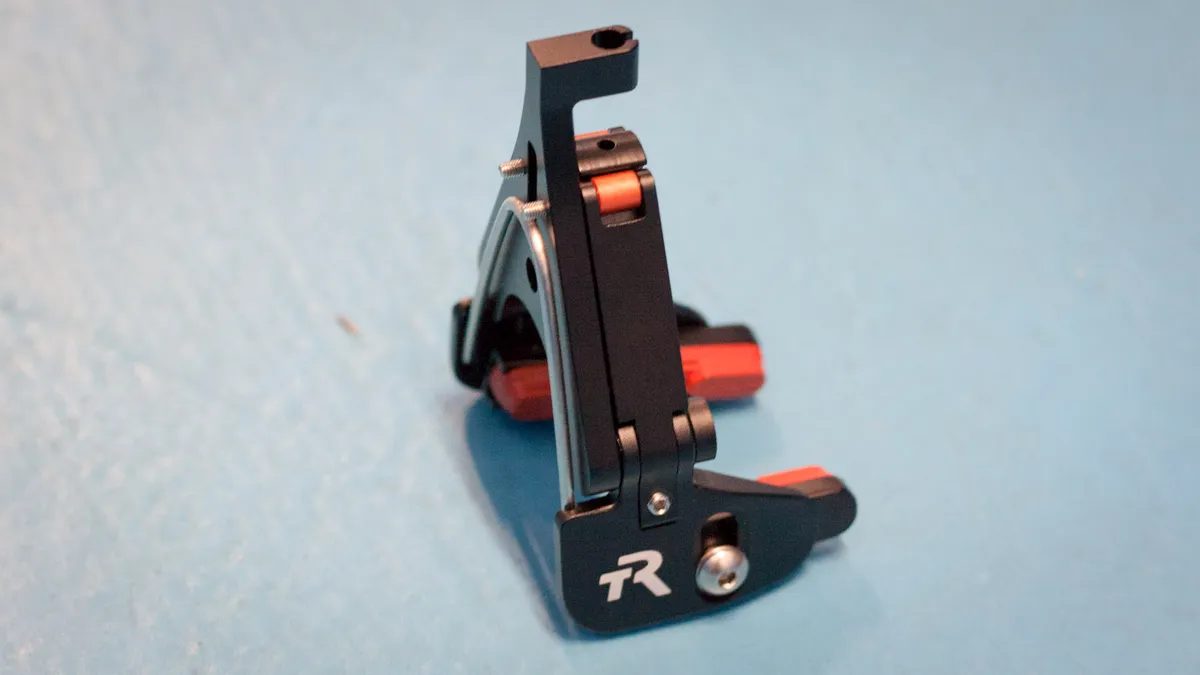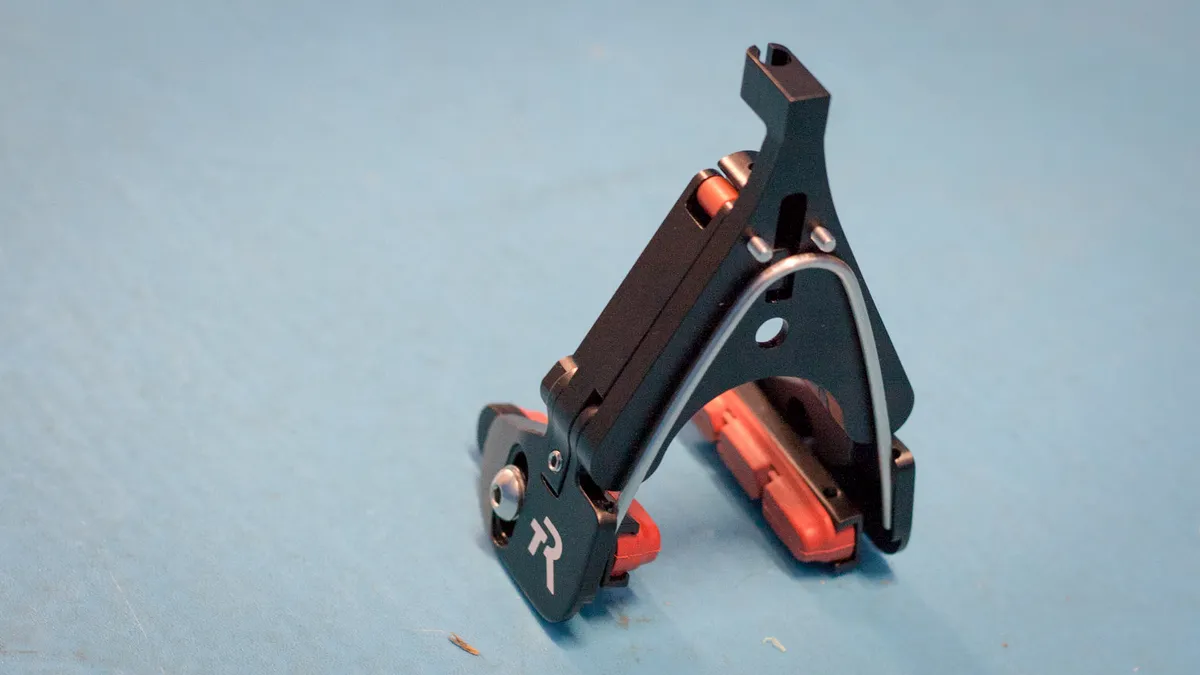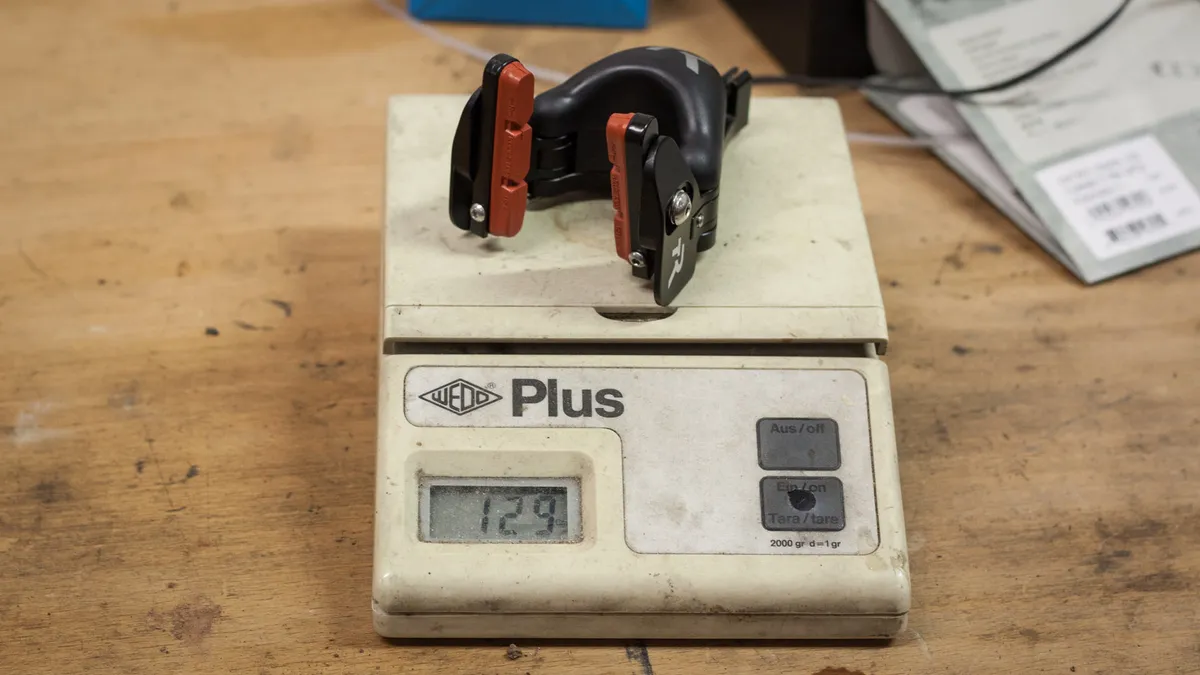TriRig’s Omega X brake is powerful, light, aerodynamic and very easy to adjust. That’s pretty much all you need to know about this bespoke design from the US.
- Highs: Light, small, easy to install and adjust, powerful
- Lows: Fairly expensive, not as smooth an action as Shimano
- Buy if: You want to save grams of weight and drag
The brake uses a centre-pull set-up with a wedge that’s pulled upwards under tension. This engages the two sidearm levers to close the brake pads on the rim. It’s an incredibly simple and elegant piece of design.
Installing the brake is an easy process thanks to the magnetised plastic cover that hides the inner workings from the elements yet allows quick access when needed. Included mounting plates, it’s compatible with both single bolt and direct mount brakes (Shimano and TRP). There’s a full list of time trial bike compatibility on the TriRig website, so you can be sure it’ll work before buying, along with an instructional video for setting up the Omega X.
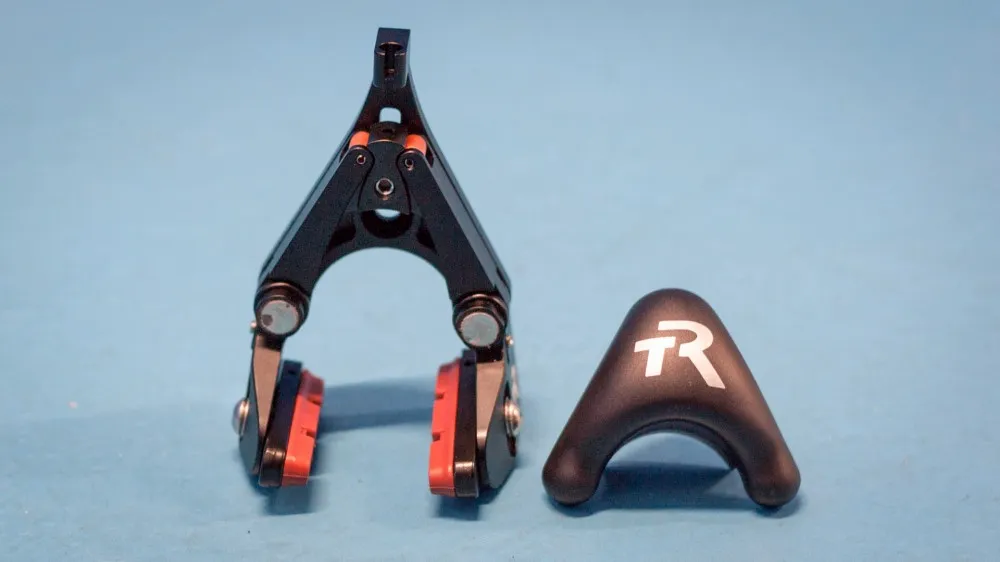
Magnets hold the fairing on; the wedge design pulls up against the rollers, which engage the arms
Once the brake’s secured, a bit of hex-key twiddling allows you to set pad width via a grub screw on each arm. Both sides move independently so there’s no frustrating back and forth to get a perfect spacing. At full reach, the Omega X will accommodate 32mm wide rims.
While the RRP of the brake isn’t too far from a Dura-Ace caliper, the Shimano models are considerably cheaper online. Having said that, our test brake weighs in at just 129g (134g claimed) including the brake shoes and Kool-Stop salmon pads – that’s 20g lighter than Shimano’s top-end brake and certainly into the featherweight category.
The best part is that there’s no penalty for this weight weenieism – pump the lever hard and you’ll know about it. There’s loads of stopping power, easily equalling dual pivot designs from Shimano et al. The only criticism in this department is that the return spring is so strong that feathering the brake doesn’t feel quite as natural as it does with Shimano’s models. It’s something you’ll get used to though.
The brake is very compact (64mm at its widest) and fits well within the fork profile of all the TT bikes we put it up against. This, along with the smooth fairing and central cable make us confident of a drag saving over traditional designs.
This advantage, plus the excellent power, makes the Omega X seem a far more appealing prospect than suffering with the set-up woes and usually crap braking of integrated systems. Unless you’re riding straight-line courses with no braking needed, there’s definitely a strong case for choosing a TT bike with a front-mounted brake and factoring an Omega X into the cost.

